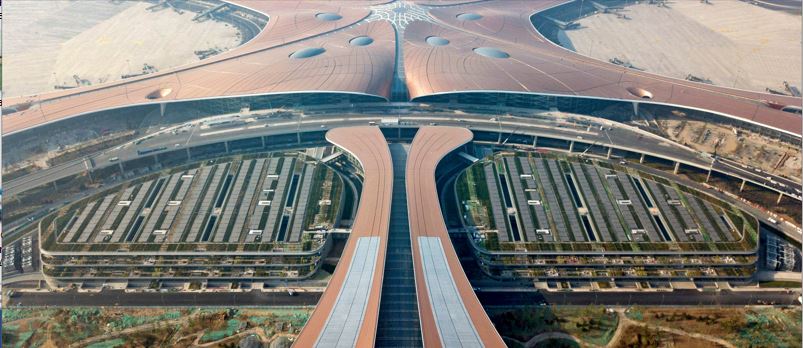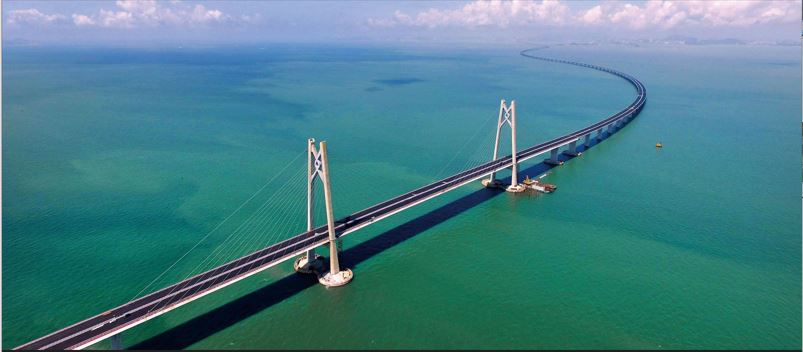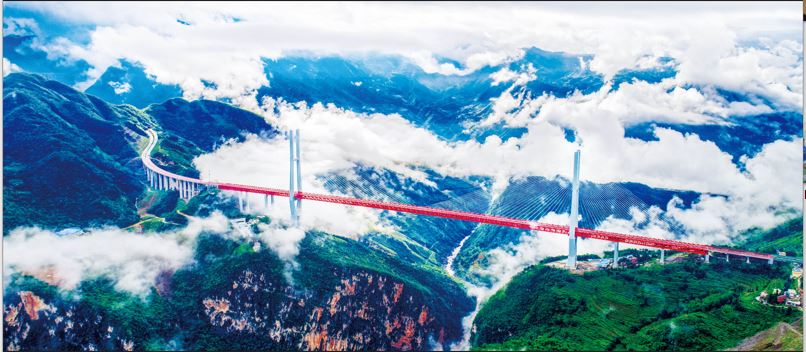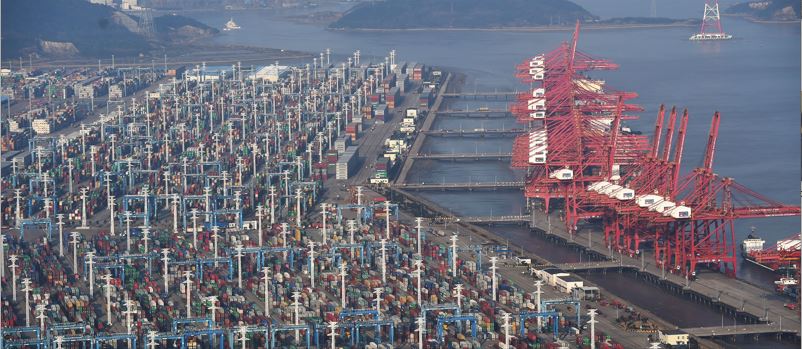
Beijing Daxing Airport
We are celebrating the 74th anniversary of the founding of the People’s Republic of China on October 1st. Since 1949, China has gone through an arduous and glorious journey that has changed its destiny. Looking back on what we have suffered and have achieved, I believe every Chinese feels deeply proud of our great motherland.
In the past 74 years, China registered world-renowned achievements of development by solidarity and diligence, determination and innovation, harmony and inclusive, etc. Among them were:
A great miracle in the human history of poverty reduction. By solidarity and diligence, absolute poverty was eradicated in China, 850 million people were lifted out of poverty, achieving the poverty reduction target of the UN 2030 Agenda for Sustainable Development 10 years ahead of schedule. China has achieved its first centenary goal of fully building a moderately prosperous society in all respects, a dream that has never been realized in Chinese history, comes true today.
—GDP per capita in 2022 stands at US$12,700, people’s average life expectancy has reached 78 years, rising up significantly from US$53 and 35 years respectively at the early stage of its founding.
—China has put in place the largest education, social security, and health care systems in the world. Basic social insurance is never enjoyed as widely as today.
—Equality and efficiency were much more well-addressed and balanced. With “no one left behind”, a happy life for all as the biggest human right is high on China’s governance agenda.
A great miracle of rapid economic development. With determination and innovation, China completed in only decades the industrialization process that developed countries have gone through in hundreds of years. China’s economic power and comprehensive national strength have been significantly enhanced. China was and still is the main engine for global economic recovery and growth.—Rising from ground zero, China has become the world’s second largest economy, the largest manufacturing country, the largest trader of goods, the largest foreign exchange reserve country, and the second largest destination and source country of foreign direct investment. In the first half this year, China’s economy grew by 5.5%. According to the IMF World Economic Outlook updated last month, China’s economy is expected to grow by 5.2% this year, accounting for one third of global growth.—Inter-connectivity is greatly enhanced.
 China has built the world’s largest networks of high-speed railways and expressways with the in-service lengths of 42,000 and 177,000 kilometers respectively. A batch of world-class mega projects are eye-catching, such as the Hong Kong-Zhuhai-Macao Bridge, the world’s longest cross-sea bridge, which helps reduce the travel time from over 3 hours to just half an hour. —Digital capacity is greatly empowered. China has built the world’s largest ICT infrastructure. In 2023, the number of Internet users in China reached 1.08 billion, and the Internet penetration rate reached 76%. China has made breakthroughs in key fields such as manned spaceflight, lunar and Martian exploration, deep sea and earth probes, supercomputers, satellite navigation, quantum information, artificial intelligence, etc. The contribution of scientific and technological progress to economic growth has exceeded 60%. —Green concept is greatly integrated. Over the past ten years, China has sustained an average annual economic growth of 6.2% with only an average annual energy consumption growth of 3%. China now has the largest photovoltaic industry in the world, and its photovoltaic power generation capacity accounts for 42% of the global total. China’s new energy vehicle industry is leading the world. Historic changes have taken place in ecological and environmental protection.
China has built the world’s largest networks of high-speed railways and expressways with the in-service lengths of 42,000 and 177,000 kilometers respectively. A batch of world-class mega projects are eye-catching, such as the Hong Kong-Zhuhai-Macao Bridge, the world’s longest cross-sea bridge, which helps reduce the travel time from over 3 hours to just half an hour. —Digital capacity is greatly empowered. China has built the world’s largest ICT infrastructure. In 2023, the number of Internet users in China reached 1.08 billion, and the Internet penetration rate reached 76%. China has made breakthroughs in key fields such as manned spaceflight, lunar and Martian exploration, deep sea and earth probes, supercomputers, satellite navigation, quantum information, artificial intelligence, etc. The contribution of scientific and technological progress to economic growth has exceeded 60%. —Green concept is greatly integrated. Over the past ten years, China has sustained an average annual economic growth of 6.2% with only an average annual energy consumption growth of 3%. China now has the largest photovoltaic industry in the world, and its photovoltaic power generation capacity accounts for 42% of the global total. China’s new energy vehicle industry is leading the world. Historic changes have taken place in ecological and environmental protection.
A great miracle of enduring social stability. By promoting harmony and inclusiveness, China has maintained overall political and social stability in the past 74 years, in spite of tremendous economic and social changes,
and various major internal and external tests. This is in stark contrast to increasing social divisions and even political turmoil in some countries around the world.
—China has continued to develop a sound internal atmosphere in which people of all ethnic groups are able to live and work in peace and contentment. Social stability and order prevail all around the country. Public participation in social governance is growing, and social governance becoming smarter, more law-based, and more specialized. Through endeavors such as advancing rule of law and building a “safe China”,China has been widely recognized as one of the safest countries in the world.

Hong Kong-Zhuhai-Macao Bridge, the world’s longest cross-sea bridge
—China has continued to pursue a peaceful coexistence international environment in which countries big or small are able to focus on its own development and enjoy the benefits from win-win cooperation. China has established diplomatic relations with 182 countries. It is the second largest contributor to the UN regular budget and peacekeeping budget, and the main trading partner of over 140 countries and regions. Through endeavors such as advocating true multilateralism, upholding fair and inclusive globalization, and building a “safer world”, China has always been a builder of world peace, a contributor to global development and a guardian of international order.
The year of 1949 marked an important watershed in Chinese contemporary history. Before 1949, China was reduced to a semi-colonial, semi-feudal society due to the aggression of Western powers and the corruption of feudal rulers. The country endured intense humiliation, and the Chinese nation suffered greater ravages than ever before. With a backward agriculture and industry, the economy was extremely underdeveloped. The people were subjected to untold misery without dignity. Under the exploitation of landlords, food and clothing was a luxury for most peasants. In lack of medical and health services, they were exposed to various illnesses and pandemics. More than 90% of the population was illiterate. With the founding of the People’s Republic of China in 1949, Chinese people decisively changed its destiny. The Chinese nation has achieved a tremendous transformation, from standing up and growing prosperous to becoming strong, and its national rejuvenation has become a historical inevitability. China is now embarking on a new journey of its modernization, which will surely benefit the whole world.
Judging from a long-term perspective and a wider space dimension, China might be a major force in changing the destiny of the world, developing countries in particular. Colonialism was a nightmare that brought untold disasters to developing countries including China. Although colonization in its traditional sense has phased out, it is undeniable that most developing countries, basically as raw material suppliers and commodity markets, have not shaken off exploitation and plunder. The fact that the GDP per capita of developed countries is 9 times that of developing countries, is a case in point. And in international arenas, the voice of developing countries is seriously disproportionate to their territorial size and population. Why can’t we? Fate-changing remains the pressing task for developing countries, and as the largest developing country in the world, China is a driving force for that.

This year marks the tenth anniversary of our President Xi Jinping’s vision of building a community with a shared future for mankind, which embraces the Chinese wisdom of 5000 years. It calls for all peoples, all countries, and all individuals, with our destinies being interconnected, to stand together in adversity and through thick and thin, navigating towards greater harmony on this planet that we call home. It advocates to build an open, inclusive, clean and beautiful world that enjoys lasting peace, universal security, and common prosperity, turning people’s longing for a better life into reality. Over the past 10 years, China has promoted high-quality Belt and Road cooperation, implemented the three global initiatives (the Global Development Initiative, the Global Security Initiative, the Global Civilization Initiative), and worked with many countries and regions to help boost international cooperation in all areas, deliver tangible benefits to more people around the world.
Since I set foot on this beautiful country of a thousand of hills, I have found out more and more that China and Rwanda have a lot in common, such as the spirit of solidarity and diligence, determination and innovation, harmony and inclusive.
—Both countries rose in ruins and revitalized. The Rwandese Patriotic Front (RPF) saved the country amid the 1994 Genocide against Tutsi and led the Rwandan people in social and economic rebuilding, with a great success. Rwanda sustained high-speed economic development in more than two decades, and built a stable, thriving society. Rwanda leads many developing countries in terms of primary school enrollment rate, average life expectancy, medical care coverage, household electricity access, etc. By thinking big and aiming high, we have every reason to synergize our respective development strategy on our modernization path.

Busy port
—Both countries won liberation at a heavy cost and value our independence and sovereignty. The two countries are both striving for benefits of their people. Both RPF and the Communist Party of China (CPC) pursue a governance concept that put people at the center. Both peoples are working hard and striving for a better life. By being united and accountable, we have every reason to support each other in our common endeavour to turn our people-centered development concept into reality, and realize common prosperity and make more great miracles.
Last Friday was Chinese Mid-Autumn Festival, a happy occasion for reunion with family and friends to enjoy the full moon. May I wish all our dear friends, brothers and sisters, enjoy lasting peace and prosperity, have good health and happiness in the days ahead.
The writer is LIN Hang Chargé d’affaires ad interim Chinese Embassy in Rwanda

